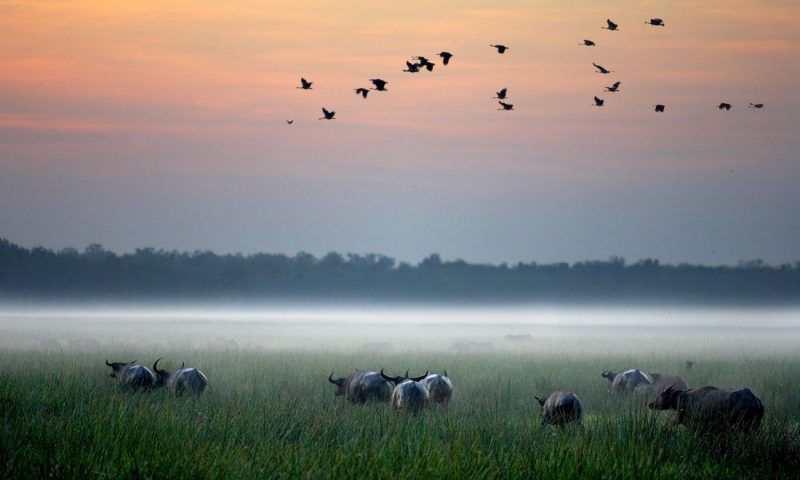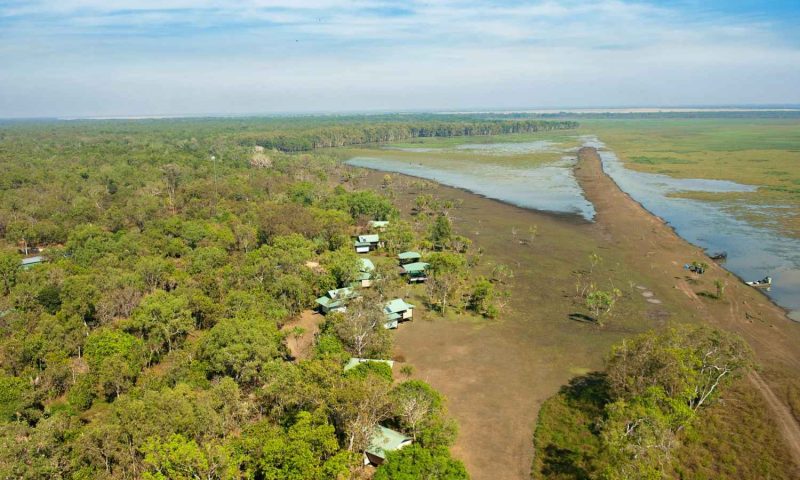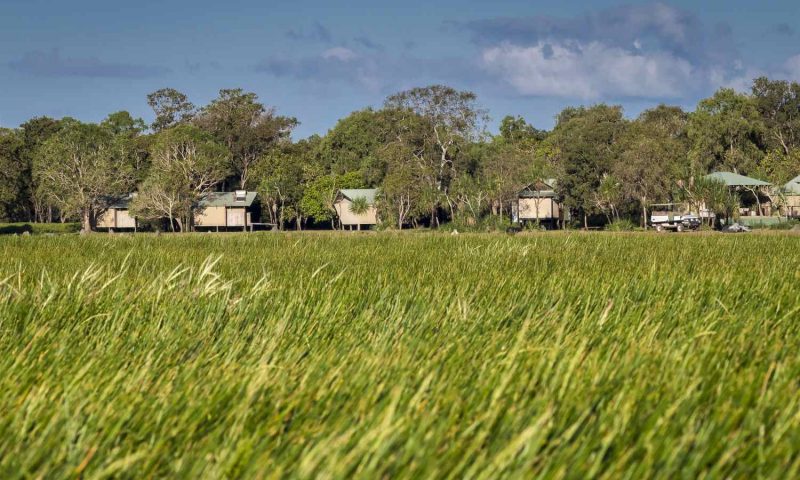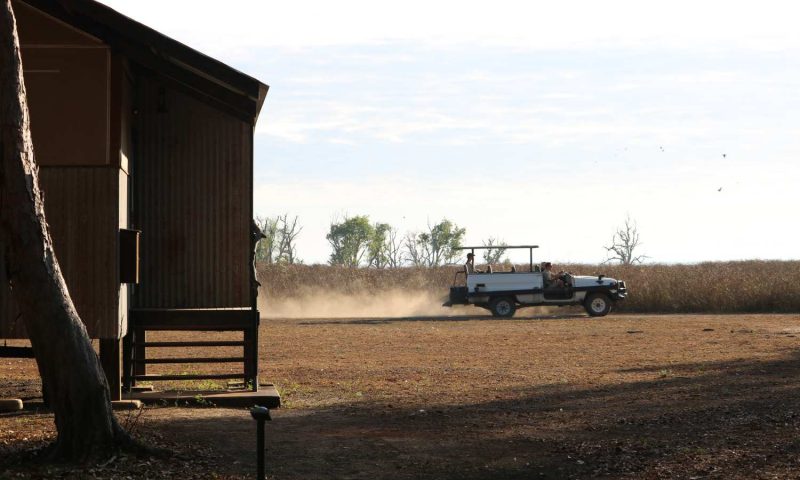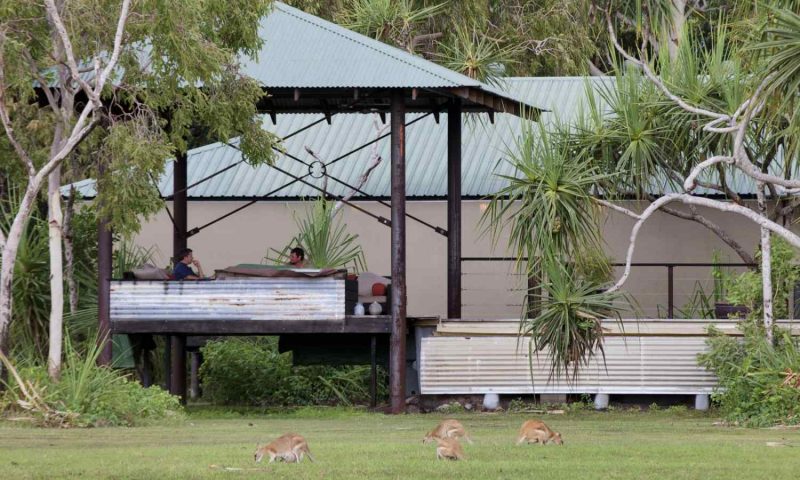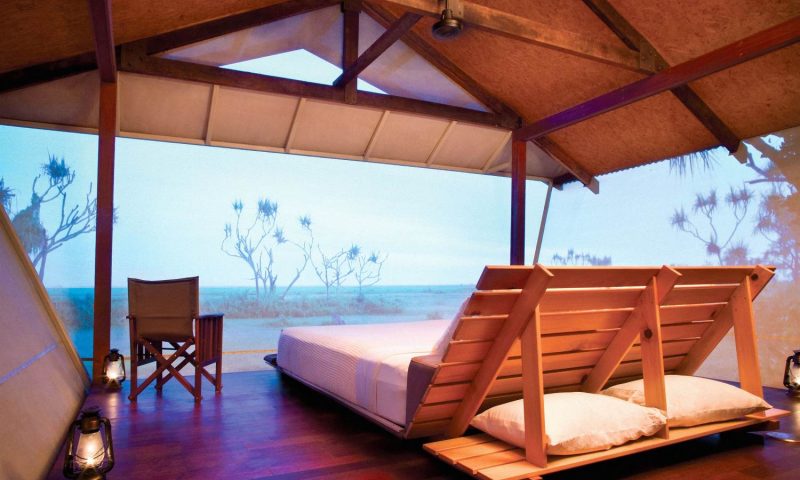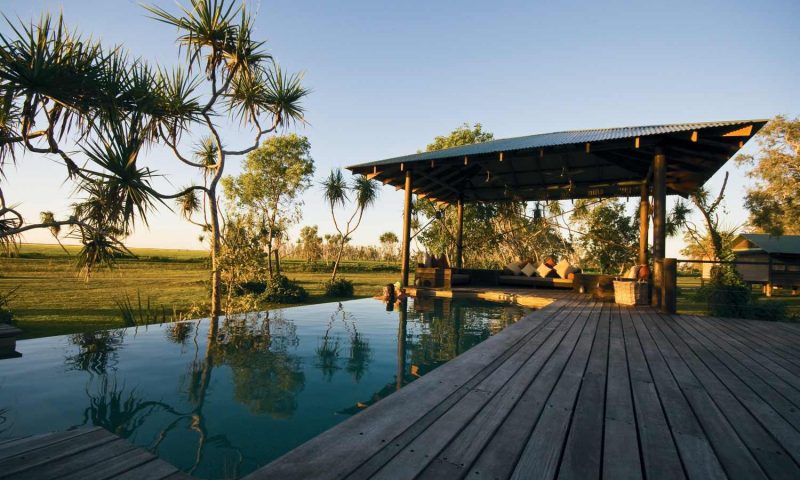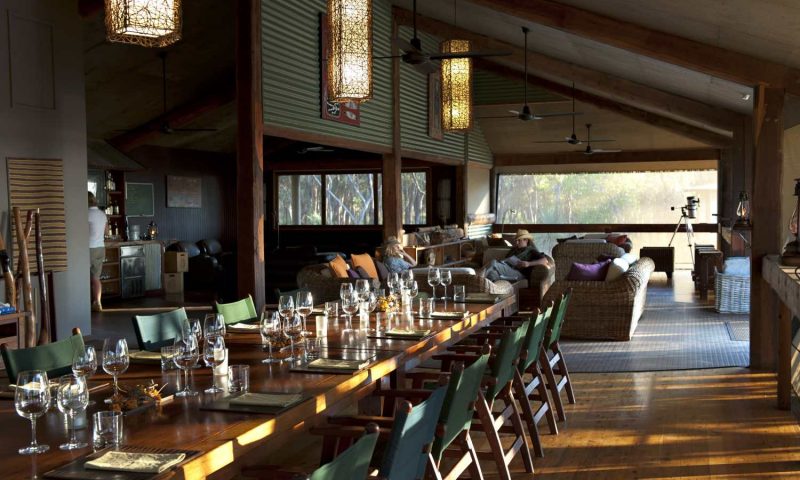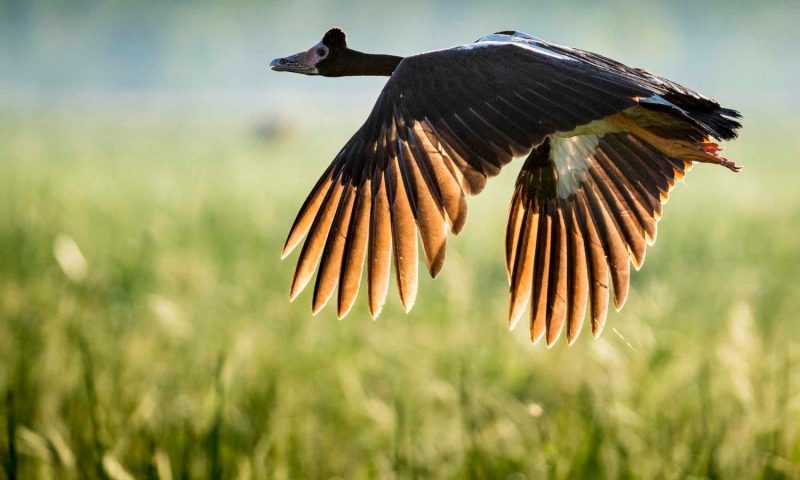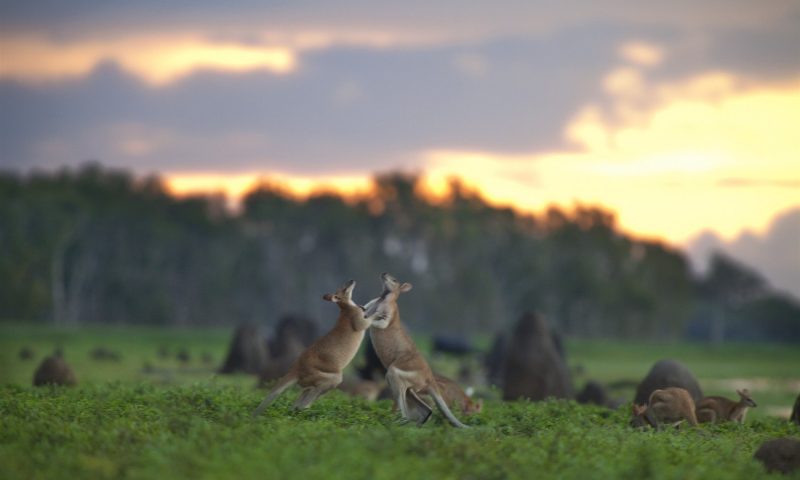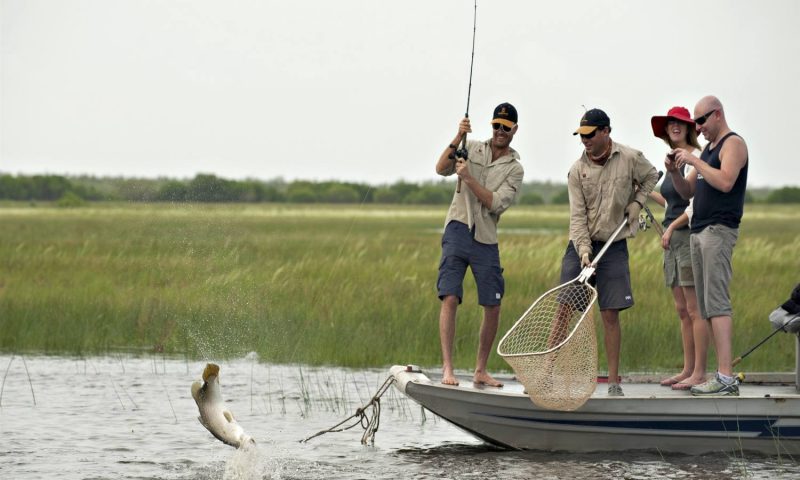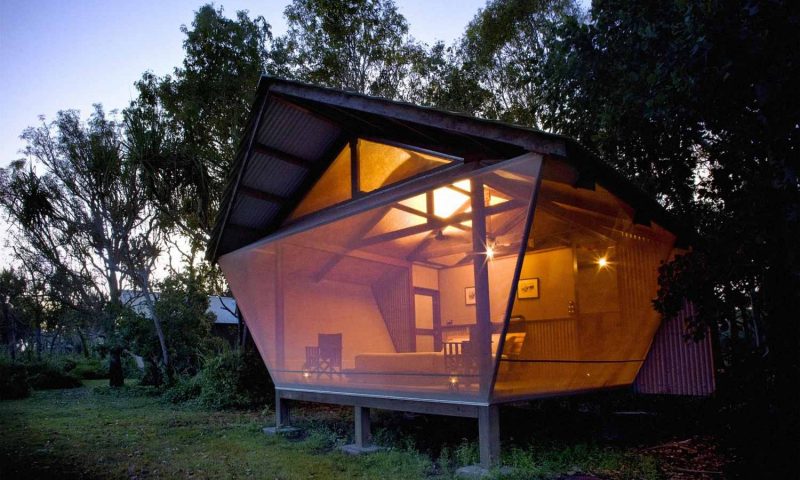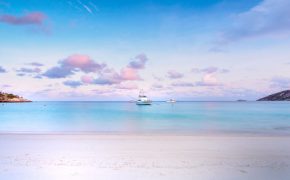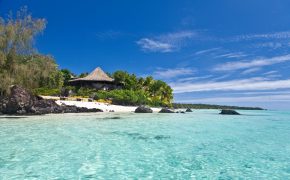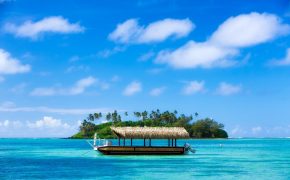We invite you to immerse yourself in an extraordinary bush experience of the coastal floodplains of Australia’s Top End. Bamurru Plains is a safari lodge with exclusive access to 300 km of floodplains and savanna woodland on the Mary River, on the edge of Kakadu National Park.
A profusion of bird and wildlife are at the doorstep of this unique bush experience that exudes ‘Wild Bush Luxury’ and brings a touch of style to the discovery of a remote and beautiful wilderness.
The true luxury of Bamurru Plains is its location. This beautiful wilderness region of over 300 square kilometres is shared by about 20 guests. The area is home to one of the largest crocodile populations in the world, and the annual migration of over one hundred thousand magpie geese is a sight to be seen.
A stay at Bamurru is bound to inspire a greater awareness of Australia’s unique and specialised environment. Watch as hundreds of birds take flight from around the infinity-edge pool, scan the shallows for big saltwater crocodiles as you skim across floodplains by airboat or slowly cruise the Sampan River watching for silver flashes of fish breaking the surface.
On guided walks and game drives search for brumbies, buffalo, dingos and wallabies or pause to consider an intriguing reptile or the adaptations of a particular insect.
With only 10 safari-style bungalows, the focus of your stay at Bamurru Plains is on the environment and the creatures for whom it is home. Each suite overlooks the floodplain and with mesh walls on three sides you can hear, see and almost touch the wildlife and wilderness around you, waking to the call of the magpie geese as the orange light of dawn spreads across the floodplains.
On safari, you will be watered and fed with delicious bush-tucker canapés. Back at the lodge, dining takes place in the main pavilion, where you can help yourself to the open bar with wines, beer and spirits. Native ingredients including bush spices and plants feature in many of the dishes – you can expect outback cuisine with a sophisticated edge.
ECO AT BAMURRU PLAINS
Guests come to Bamurru to experience our beautiful wilderness region and its prolific wildlife and birdlife, and we wish for it to remain as is for generations to come. The coastal floodplains and wetlands of the Top End are sensitive habitats and the camp’s presence in their midst must by necessity be low impact and in tune with the surrounding environment.
CONSTRUCTION OF THE CAMP
By virtue of our size (just ten free standing safari bungalows) our impact on the environment is minimal. It was built with a minimal impact on the environment, i.e. the rooms and lodge were constructed amongst the fringing bush on the edge of the floodplains, using the pandanus palms and woodland for natural cover.
THE LODGE
Guests sleep safely inside 10 rustic-chic bungalow tents—which have doors, not zippers—decked out with plush beds and spacious bathrooms.
Close-to-nature intimacy is provided by mesh walls—inhabitants can see out, but the outside cannot see in—allowing the sounds of the wild to permeate each tent. A connection to the land is heightened by the lack of technology: no TVs, no cell reception, no Wi-Fi.
Surrounded by an exotic landscape of wild pandanus and twisting trees, Bamurru Plains is the perfect spot from which to explore the mysteries and magnificence of this ancient land.
The ‘Wild Bush Luxury’ concept brings a uniquely Australian style to your stay – a down to earth yet attentive level of service; an appreciation of the finer details; and above all a team of hosts and guides who are passionate about the area and its wildlife. Proudly without wifi or even mobile phone reception, a stay here allows you to focus on nature’s stage show.
Bamurru is built amongst the savannah bush fringing the floodplains to provide a high level of comfort whilst giving guests unobstructed views of the surrounding wetlands and their teeming populations of birds and animals.
The main lodge provides an oasis of tropical calm in the midst of a noisy wildlife spectacle; comfortable wicker sofas; a well stocked library offers a collection of reference books on the Top End and Australia’s natural heritage.
During the heat of the day the cooling waters of the infinity pool beckon and later the lodge deck is the ideal place to watch wildlife graze through the camp. An expert chef conjures up delicious meals, peppered with local ingredients.
Anytime of the day you can help yourself to a cold drink from the bar – be it a crisp white wine, a gin and tonic or sparkling water – best enjoyed with one of Bamurru’s spectacular sunsets.
SAFARI BUNGALOWS
Spacious and cool, each of the nine safari bungalows are built on stilts overlooking the floodplains frequented by a myriad of bird and animal life. Mesh screens serve as your walls on three sides of your Safari Bungalow.
Being surrounded by semi-transparent screens provides an experience in which you can hear, see and almost touch the wildlife and wilderness around you. The alarm clock in the morning is the call of Magpie Geese, after whom the camp is named, as the orange light of dawn spreads across the floodplain, all is audible and visible without having to leave your bed!
The focus is on a supremely comfortable bed (organic cotton linen, pillow menu) and a spacious ensuite bathroom with high pressure showers. In addition to corrugated iron and lantern lighting, the bungalow décor reflects the region’s earlier indigenous, hunting and pastoral history with buffalo horns, explorer’s maps.
Aboriginal art work and fish traps as well as old photos providing a sense of the human heritage of the area. Each room has a cold water thermos, local flora and fauna reading materials and species list.
You won’t find a television, CD player, mini bar or even mobile phone reception here – a true escape to your immediate environment. At night, the only sound is the meanderings of marsupials in the foliage and the croak of frogs.
KINGFISHER SUITE
Our largest safari bungalow is the Kingfisher Suite with expansive floodplain views through Bamurru’s trademark ceiling to floor mesh walls. It really does feel as if you are right amongst it with an intimate sense of connection to the wildlife and wilderness outside.
With 81m2 space in the bedroom alone, the suite features a king size bed, generous lounge area and space to accommodate a family of five in comfort. For honeymooners looking for a sense of privacy, the size of the Kingfisher Suite allows for an intimate in-room candlelit dinner with only the sounds of the bush as company.
The bathroom features twin basins and showers, within a décor of rustic chic timber and recycled corrugated walls, utterly in tune with the environment and pastoral heritage of the area.
For maximum exposure (and only the local Agile Wallabies as company) the suite also offers a shower with full ceiling to floor views across the floodplain and surrounding paperbark forests.
FOOD & WINE
Our philosophy to provoke, inspire and reconnect guests to the bush is reflected in every aspect of your stay at Bamurru Plains, including your dining experience.
Bamurru’s chefs incorporate native and locally sourced produce to provide a gourmet experience integrating authentic, yet contemporary Australian recipes, from kangaroo skewers to crispy barramundi with finger lime salsa and quandong ice-cream. Dining is enjoyed with fellow guests, where the day’s stories are recounted and new friends are made.
DAILY DELIGHTS OF NATIVE AND LOCAL AUSTRALIAN PRODUCE
After you’ve woken to the laugh of a blue-winged kookaburra, the soundtrack of the corellas’ cacophony and the chorus of thousands of magpie geese, enjoy a light breakfast such as freshly baked wild berry & wattle seed muffins, ‘bush eggs’ any style on sourdough with bacon, tomato, warrigal green & kutjera relish or house blend bircher museli with Manuka honey, bush apple and a dollop of vanilla bean yoghurt.
Lunch is generally served on the wildlife observation deck overlooking the floodplains, where you might enjoy citrus and fennel warm chicken salad with roasted macadamia nuts while watching a changing cast of birds, brumbies, buffalo and wallabies.
Canapés and sundowners are enjoyed out in the wilderness during your afternoon activity or on the lodge deck just before dinner. Nightly, a three-course dinner hosted by one of your field guides is served at the long timber dining table as frogs break into a croaky serenade.
The menu features Australian bush-inspired recipes. Watch our chef create his favourite bush spiced duck confit in the open kitchen from the dinner table. Guests can help themselves to drinks at any time from the self-service bar offering a variety of refreshments, including an after dinner tipple for those so inclined.
THE FLOOD PLAINS OF THE ‘TOP END
The Top End is a place of climatic extremes, spectacular storm skies and an annual cycle of environmental rebirth. On the edge of the Mary River floodplains, just a short distance from the coast is Bamurru Plains, a 300 km² private property on the edge of Kakadu National Park.
Here you’ll experience a beautiful wilderness region and its prolific wildlife and birdlife. At night no other lights shine out; the only sound is the deep chorus of the Australian bush – various frog species, barking owls and the occasional dingo. The fragile ecosystem remains one of the world’s most beautiful wilderness areas with its vast diversity of animals and birds.
Nearby is Kakadu, a region of exceptional natural beauty and unique biodiversity, and one of only a few World Heritage areas listed for both its cultural and its natural values. Kakadu National Park is managed jointly by its Aboriginal traditional owners and the Director of National Parks.
Guests enjoy exclusive access to Bamurru’s miles of the Sampan River, coast and Mary River Floodplain system with daily guided wilderness activities such as croc-spotting river cruises, 4WD safaris, wildlife viewing or walking safaris. Surrounded by wetlands and savannah woodlands, Bamurru Plains is often likened to the Okavango Delta of Botswana.
THE FLOODPLAINS & WETLANDS
Magpie geese, plumed whistling ducks, egrets, ibis and jabiru on high and the odd crocodile spying from under those lilies. Wild brumbies graze on a green pick in the shade and we spot a bush pig in a hurry.
MELALEUCA FORESTS
Imagine a forest of paperbark trees, their mirror images visible on the surface of the pristine water.
SAVANNAH WOODLANDS
This is where a pageant of wildlife appears, dozens of wallabies hopping in the golden light, the buffalo roaming and birds aplenty.
RIVERINE ENVIRONMENT
The catchment area of this riverine environment is over 8,000 square kilometres. It flows in the wet season but dries up into billabongs durning the dry. It’s an important birding area, habitat for many wetlands creatures including home to many crocodiles, and of course the prized barramundi.
STONE COUNTRY OF KAKADU
Australia’s biggest national park and a World Heritage Area listed for both its natural and cultural heritage, this is an ancient landscape that encompasses towering escarpments, wetlands filled with bird and marine life, powerful meandering rivers, diverse wildlife and some of the country’s best Aboriginal art galleries.
WILDLIFE AT BAMURRU PLAINS
“Each day we feel like we are an integral part of their animal kingdom, not just next to them: waking up with them, going to bed when they are ready for the night’s rest. No ringing phones, no bombarding emails, no loud TVs; we are totally connected with nature“
LUXURY TRAVEL MAGAZINE
The floodplains and neighbouring savannah woodlands host an immense variety of wildlife which can be viewed on foot, by boat or by vehicle. Frequently seen species include Agile Wallabies, dingos, Estuarine Crocodiles, wild pigs and buffalo. A variety of reptiles, water monitors and other amphibians appear at night.
When the tide is right river cruises on the Sampan River, which forms the western boundary of the station, reveal one of the largest crocodile populations in the world. Cruising amongst the mangroves in search of these prehistoric reptiles will also uncover a huge variety of birdlife.
A morning trip by airboat is utterly exhilarating and the only way to truly experience an environment that is home to thousands of Magpie Geese, Plumed Whistling-Duck, Egrets, Ibis and a host of other birds. In fact the Mary River catchment is home to some 236 species of bird, many of which are found at Bamurru Plains.
Raised 6m in the air, Bamurru’s ‘The Hide’ is the ultimate eyrie from which birdlife and other wildlife can be observed undisturbed in their natural habitat.
Our safari bungalows are built amongst the savannah fringing the floodplain and are designed to expose guests to the sights and sounds of the bush around them. Watching the wildlife come alive from the comfort of your bed is a real highlight.
SEASONS OF THE TOP END
On the edge of the Timor and Arafura Seas, situated closer to the islands of Indonesia than the vast majority of Australia, the ‘Top End’ is a region of climatic extremes, spectacular storm skies and an annual cycle of environmental rebirth.
Only operating when temperatures are comfortable and wildlife is abundant, fishing for Barramundi takes place March to April before morphing into a safari lodge May to October annually. The lodge closes November to January when it’s frightfully hot and wet.
APRIL TO JULY
Nights can be cool and early morning fogs common. The days are warm, dry and generally cloudless with some spectacular sunsets. From April the water begins to slowly recede from the floodplains. This is the season of life and rebirth as many species start to teach their young how to navigate the floodplains.
You’ll see Magpie Geese chicks running through the floodplain having not quite mastered flight, Spot Agile Wallaby joeys learning to hop and Jacana chicks learning to manoeuvre on their stilt legs.
AUGUST TO SEPTEMBER
Days and nights start to warm up, leading to many tropical woodland plants flowering at this time of year. Watch as Australian Pelicans blanket the floodplain in white and marvel as the waters begin to retreat creating pockets of water concentration that draw in extraordinary numbers of birdlife rarely seen in Australia.
This is an exciting time for photographers and bird-enthusiasts, as both fantastic photographic opportunities and bird watching becomes as easy as looking toward the floodplain.
OCTOBER TO DECEMBER
This is a time of increasing humidity and heat, with the build-up of massive cumulus clouds and exciting thunder and lightning shows. Birdlife continues to congregate in extraordinary numbers in October. With the dry season coming to an end, the floodplains remaining pockets of water are an abundant source of wildlife.
The drying floodplain opens up access to new regions waiting to be explored by 4WD, quad bike and by foot and the Sampan Creek provides a hive of activity on croc-spotting river cruises.
JANUARY TO MARCH
The arrival of the monsoon season brings heavy rains, high tides and humidity. The rivers break their banks and spread out across the floodplains, water lilies flower and life returns to the country in all its majesty.
The wilderness is voracious and the food-chain is bloated from the run-off by insects, frogs, small fish, big fish, bigger fish, and crocs. With an ample wet season February can deliver an early run off but you’ll need to be a fan of dramatic tropical storms and not afraid of the heat.
AIRBOAT SAFARIS
An airboat safari is utterly exhilarating and the only way to truly experience an environment that is home to thousands of Magpie Geese, Plumed Whistling-Duck, Egrets, Ibis and a host of other birds.
The floodplain wetlands of the Mary River catchment are the key natural feature of this area and some of the most important in the country, home to thousands of Magpie Geese, Plumed Whistling-Duck, Egrets, Ibis and a host of other birds. These beautiful birds will take flight as you zip across the floodplains on your airboat, flocks sometimes thousands of birds strong!
Our guides will provide you with a hands on demonstration of the many uses of the flora from the wetlands whilst floating amongst a forest of melaleuca trees or looking out for crocodiles slowly swimming amongst the grasses of the floodplain. A morning trip out on the floodplains in an airboat is utterly exhilarating and the only way to truly experience this environment.
BIRD WATCHING
The Mary River catchment is home to some 236 species of bird, many of which are found at Bamurru Plains. The significance of this particular property comes in the variety of habitat: black soil floodplains, paperbark swamps, savannah woodland, river mangroves and coastal beaches support an extraordinary diversity of birdlife.
Even in the dry season the floodplains on the property still retain large areas of water where the birdlife congregate in extraordinary numbers rarely seen elsewhere in Australia.
SAFARI DRIVES
Learn about the Top End’s fragile habitat on an African styled safari drive. With the recession of the waters from much of the floodplain in the dry season, the plains become accessible to 4X4 vehicles and a journey out with one of our guides will provide a unique insight to this fragile yet very important environment.
Our open sided safari vehicles feature shaded canopies with comfortable and raised seating to provide the best possible vantage point to view agile wallabies, estuarine crocodiles, wild horses, buffalo’s and some of the 236 bird species on the property.
Our guides will describe the Aboriginal uses for some of the local flora and fauna while you enjoy a cool drink and bite to eat.
QUAD BIKE ADVENTURES
Criss-crossing between floodplain savannah, monsoonal forests and dry, open areas dotted with termite mounds alongside buffalo and brumbies, explore Bamurru from the wheel of your own quad bike.
This leisurely safari will take you to areas inaccessible by our regular 4WD vehicles, while our knowledgeable field guides lead you to some of our favourite secret spots.
RIVER CRUISES ON THE SAMPAN CREEK
The Mary River System harbours one of the largest crocodile densities in the world. The Sampan Creek, which is part of the Mary River System, forms the western boundary of the station.
During the dry season (May-October) the crocodiles will regulate their body temperatures by basking on the banks in the sunlight. During these months, the numbers of crocs sunning themselves will give you an idea of the size of the population.
It’s not just the crocodiles, many bird species call this mangrove lined environment home. Relax in the shade provided on our canopy covered cruise as you meander along this creek system, learning about these animals from our skilled guides and enjoying sunset canape’s as the light begins to fade.
WALKING SAFARIS
Set off on foot through paperbark forests and savannah environments. Look for ant trails that criss cross the ground at your feet, or the birds calling up in the tree tops before settling in for morning tea amongst the beauty which is Bamurru.
Head out with our guides away from the main lodge on a short drive before continuing on foot learning the Indigenous uses for the various plants and animals on Bamurru or learning how to track different wildlife through the forest. A walking safari can be individually tailored to your interests and tend to be run in the latter part of the dry season.
